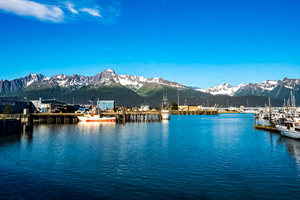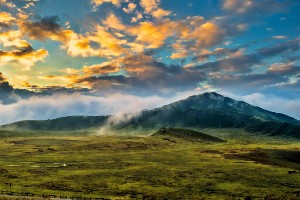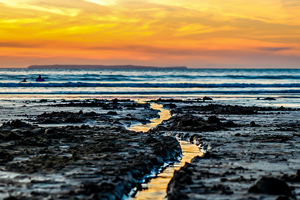Subscribe to newsletter
Find out about flash sales, new trips, what's new and gear giveaways.
Prices
From USD$3,295
-
19 days / 18 night
See available dates
-
Difficulty
- Guided
- Hotels, camps
-
- No Booking or Credit Card Fees
-
- Save Money
-
- Happiness Guaranteed
Is this tour for me?
We rate this tour as a 2/5. While this is a mostly non-active sightseeing tour, you should be comfortable travelling by car in rugged conditions and camping with basic facilities.
Get In Touch
SALE!
Let me know when you have flash sales.
Highlights
See it all on this corner-to-corner overland tour of Mongolia
Visit natural sites including the Khorgo volcano, Tsenher Hot Spring, Flaming Cliff, and Khovsgol Lake.
Check out the stunning Orkhon valley and its massive waterfall, a surprising feature in this rugged landscape.
Marvel at the huge Khovsgol Lake, spending two days exploring the “Sister Lake” of Lake Baikal.
Make stops at cultural sites, including monasteries that reveal thousands of years of storied history.
Overland Loop of Mongolia tour is an overland Jeep tour that offers a perfect introduction to Mongolia for those who have the time to spare and the desire to explore a huge portion of the country. This tour covers a long list of sites: Ulaanbaatar, the Flamig Cliff, Karakorum, the Orkhon valley and its waterfall, Khovsgol Lake, several national parks, and everything that links them.
Such an expansive itinerary is only possible with an overland tour, so this is the way to experience as much of Mongolia as possible! Book your spot today and find yourself in one of the most unique, unspoilt parts of the world, largely undiscovered by tourism. Overland Loop of Mongolia will make you fall in love with this one of a kind country!
Overland Loop of Mongolia tour is an overland Jeep tour that offers a perfect introduction to Mongolia for those who have the time to spare and the desire to explore a huge portion of the country. This tour covers a long list of sites: Ulaanbaatar, the Flamig Cliff, Karakorum, the Orkhon valley and its waterfall, Khovsgol Lake, several national parks, and everything that links them.
Such an expansive itinerary is only possible with an overland tour, so this is the way to experience as much of Mongolia as possible! Book your spot today and find yourself in one of the most unique, unspoilt parts of the world, largely undiscovered by tourism. Overland Loop of Mongolia will make you fall in love with this one of a kind country!
Read more
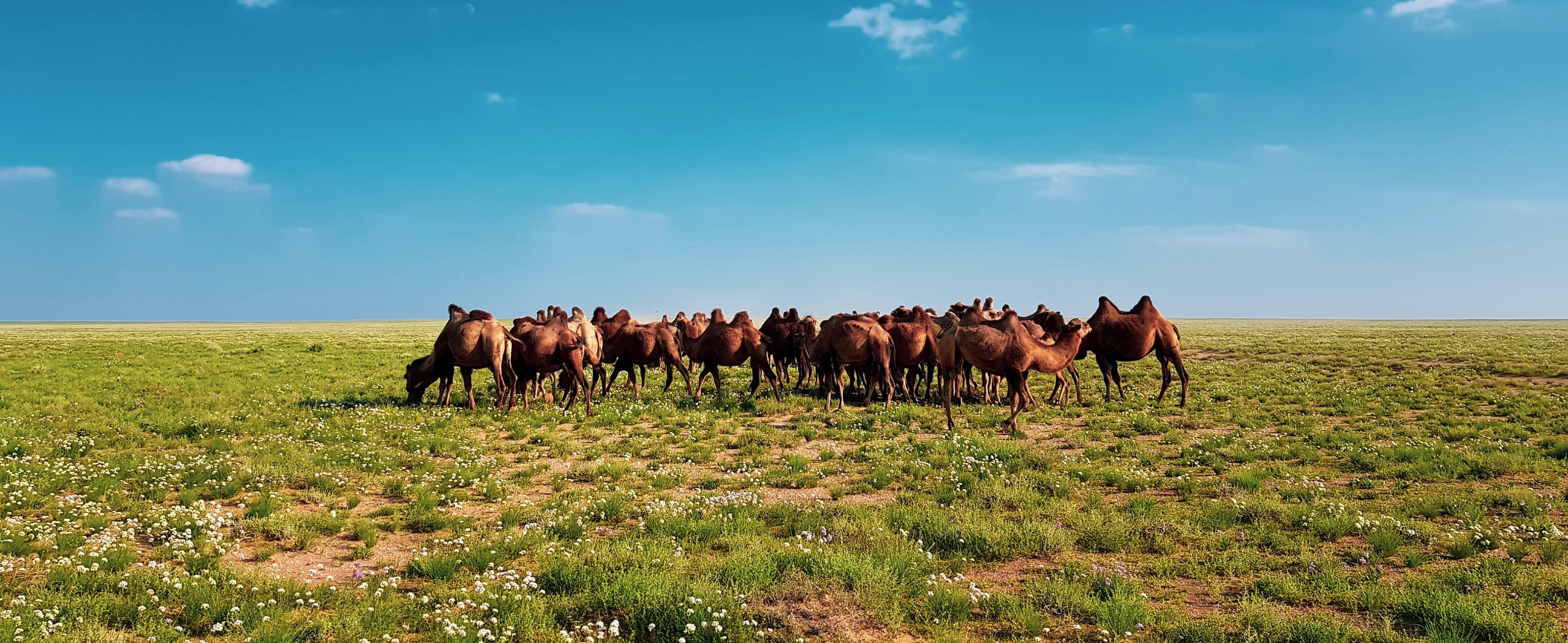
Overland Loop of Mongolia Itinerary
Day 1 Arrival at Ulaanbaatar and Optional City Tour
On the first day, a 4-5 hour city tour can be arranged depending on your arrival time, which includes Bogd Khan’s Winter & Summer Palace, a series of beautiful traditional buildings in which the eighth Living Buddha and the last king lived.
You will also explore the Gandantegchinlen Monastery, which is the largest and most important monastery within Mongolia, before visiting the magnificent 82-foot high statue of Migjid Janraisig. You will finish the city tour atop Zaisan hill for a view of Ulaanbaatar.
In the evening, your tour guide will give you a short briefing about the coming trip and answer all your question, before taking you to a famous Mongolian restaurant for a first taste of Mongolian food.
Overnight Location: Hotel in Ulaanbaatar
Meals: Dinner
Day 2 Baga Gazriin Chuluu
The first stop will be 250 kilometers south in the lovely region of Baga Gazriin Chuluu. It’s a big granite formation smack dab in the center of Mongolia’s sandy plain.
The remains of a small monastery known as Delgeriin Choir Monastery can be found on an open plain. You will be entering à Ger for the first time, and you will be greeted by a massive 12-walled structure. Monks use the ger, which is richly decorated and carved, to chant during the colder seasons when the stone monastery becomes too cold to be inside.
You can drive and hike around the area in the late afternoon. You’ll walk between massive endlessly piled granite rocky hills and see the picturesque ruins of a small monastery hidden in a peaceful little protected valley. In the rocks of Baga Gazriin Chuluu, there is a small spring known for its eye-healing properties. Try dripping some magic water into your eyes to cure your eyes like the locals do.
Overnight Location: Camping in Delgertsogt sum
Meals: Breakfast, lunch, dinner
Day 3 Tsagaan Suvarga
Start driving towards the Gobi Desert after breakfast. Today, the landscape will change drastically from lush grassland to inhospitably rugged terrain. Tsagaan Suvraga will be reached in the afternoon. The cliff has a height of 30 meters and a width of 100 meters. The wind has sculpted this remarkable structure for thousands of years.
Tsagaan Suvraga appears to be the remains of an ancient town with crumbling buildings from afar. Ancient depictions of people hunting ibex with longbows and petroglyphs depicting wild animals and cattle are painted and carved into the rocks. The caves here also contain various Turkic inscriptions, seals, and images.
From the upper slopes of a mountain down into the steppe, a fissure runs east to west. Strong mud columns rise from the depths below while looking through the fissure. The yawning chasm resembles the gaping jaws of some fantastic creature. Some of the caves have several chambers, one of which is over 70 meters long.
Overnight Location: Camping in Tsagaan Suvraga
Meals: Breakfast, lunch, dinner
Day 4 Yolyn and Dungenee Am
Today we will be driving to the South Gobi province town of Dalanzadgad. The Gobi Desert extends through Mongolia and China, measuring 1,610 kilometers from southwest to northeast and 800 kilometers from north to south. It covers an area of 1,295,000 km2, making it the world’s fifth-largest desert and Asia’s largest. although most of the Gobi is coated in bare rock rather than sand.
During the winter months, the Gobi is a cold desert with frost snow on its dunes. In addition to being far north, it is situated on a plateau between 910 and 1,520 meters above sea level, which leads to the cold temperatures. The Gobi receives around 194 millimetres of rain per year on average. In the winter, snow blown from the Siberian Steppes enters parts of the Gobi, providing additional moisture. The Gobi experiences temperature extremes ranging from –40°C in the winter to +50°C in the summer due to these winds.
We’ll take a trip through the majestic Altai Mountain Range’s breathtaking gorges. The Yolyn Am and Dungenee Canyons, both in the Gobi Gurvansaikhan National Park, will be visited. Those green valleys were carved by ancient rivers.
Wild Argali sheep, Ibex, desert gazelles, and Golden Eagles are also possible sightings. We’ll also pay a visit to the park’s small museum, which houses a collection of dinosaur bones as well as local flora and fauna.
Overnight Location: Camping in Gobi
Meals: Breakfast, lunch, dinner
Day 5 Khongoryn Els
After a hearty breakfast, you’ll travel 150 kilometers west to the Khongoryn Els. Mongolia’s biggest sand dunes can be found here. The dunes, which can reach a height of 275 meters in some areas, extend for more than 100 kilometers from east to west. The sands have appealing curves that end in a sharp point, resulting in wave patterns on the sand. The impressive black rocky mass of Sevrey Mountain can be seen behind the sand dunes. Here, we’ll meet two humped camel breeding families and learn about their sweet, modest, hard-working, but incredible way of life.
The Gobi Desert is the world’s coldest desert, with cold winds blowing almost the whole autumn, winter, and spring without any shelter uncovered in the plains, necessitating extreme survival methods of living. Gobi nomads are well-known in Mongolia for their dedication to hard work.
Overnight Location: Camping in Gobi
Meals: Breakfast, lunch, dinner
Day 6 Bayanzag or Flaming cliff
Today’s drive will take us to Bayanzag, also known as the “Flaming Cliffs,” the world-famous site where paleontologist Roy Chapman Andrews discovered dinosaur bones and eggs. The local scenery is a lovely blend of rocks, red sand, and scrubs.
Spend some time exploring the cliffs while you’re here.
Overnight Location: Camping in Bayanzag
Meals: Breakfast, lunch, dinner
Day 7 Ongiin & Khoshuu Monastery
Today you will travel to Ongi Monastery in the northwest. The ruins of two monasteries that face each other across the Ongi River in south-central Mongolia are known as Ongi.
The peace and beauty of the Delger Khangai Mountains will enchant you. On one side of the river, you’ll visit the ruins of Khoshuu Monastery. This vast series of rocky hills cut by the river can be explored on foot. The monastery’s southern complex contains numerous administrative buildings as well as 11 temples. The northern complex, which was built in the 18th century, included 17 temples, including one of Mongolia’s largest temples. There were four Buddhist universities situated on the grounds.
The monasteries were constructed in the 17th century and were demolished in 1937. They were among Mongolia’s largest temples, housing over 1000 monks. Today, a small monastery has been built between the ruins, and the remains of old monasteries are displayed in the Ger museum.
Overnight Location: Camping in Ongi
Meals: Breakfast, lunch, dinner
Day 8 Karakorum
Today you will be driving to Karakorum (also called Kharkhorin). Karakorum was the capital of Genghis Khan’s Mongolian Empire in the thirteenth century. In 1220, Genghis Khan ordered the building of Karakorum on the ruins of Turug and Uighur cities in the Orkhon valley at the eastern end of the Khangai Mountains. During the reign of Ugedei Khan, it was completed 15 years later. The town was very multicultural and culturally accepting.
The Karakorum Archaeological Museum will be one of the stops on your itinerary. It’s a tiny museum, but it’s housed in a new, well-run structure with good lighting and simple English labels on display cases. You can also visit the Turtle Rock and the Phallic Rock, as well as a small market hidden behind walls that showcases local artists’ work.
Overnight Location: Camping in Karakorum
Meals: Breakfast, lunch, dinner
Day 9 Orkhon Valley & Waterfall
During the Quaternary period, a volcano erupted near the mouth of the Tsagaan Azarga, also known as the White Stallion River, and the lava flowed down the Orkhon valley, creating a 10-meter-thick layer of basaltic rocks. The Orkhon River cut through the basaltic layer twice, resulting in the formation of the canyon.
The 20-meter-high, 10-meter-wide waterfall marks the beginning of this canyon. If feeling daring, you will descend the canyon and swim in the lake at the base of the waterfall. UNESCO has designated the valley as a world cultural heritage site because of ancient artifacts dating back to the early 6th century and even earlier. Moreover, the great Mongol empire expanded its capital Karakorum here from the 12th to 13th centuries. Furthermore, the pasture nomadic lifestyle has persisted, preserving both the historic and nomadic perspectives on life.
Overnight Location: Camping in Orkhon Valley
Meals: Breakfast, lunch, dinner
Day 10 Tovkhon Monastery and Tsenher Hot Spring
Today you will travel to the Tovkhon Monastery. Zanabazar, one of Mongolia’s most revered religious figures, founded the monastery in the 1650s. The wooden structures of the monastery are combined with a natural system of caves perched near a hilltop with a stunning view of the Orkhon Valley and surrounding pine forests. A hill is formed on the top of the cliff by a pile of stones used to worship a mountain god. It’s known as Ovoo.
After visiting the monastery, you will drive to westward in the direction of Khangai Mountains. In the afternoon you will reach Tsenkher hot spring. This resort gives its guests access to a large open-air pool. The pool’s hot water comes from a hot water spring that runs continuously. The water is over 80 degrees Celsius in the spring. The temperature of the water is regulated by a complex pipeline system. Some people will sit in the pool for hours, conversing with their mates while looking at the stars or scanning the nighttime landscape around them.
Overnight Location: Camping in Tsenkher
Meals: Breakfast, lunch, dinner
Day 11 Drive to Terkhiin Tsagaan Nuur
Today you will head to Tsetserleg, the capital of Arkhangai province. It’s a charming little town nestled among forested hills. You’ll go to the Buyandelgeruulekh Monastery, the town’s main operating monastery, as well as the Arkhangai Museum, which is housed in the Zayaiin Gegeenii Monastery. You’ll walk up the hill from the museum to a small, abandoned monastery and take in the stunning views of Tsetserleg and the surrounding hills. You will eat lunch in a local restaurant. You will arrive in the Terkhiin Tsagaan Nuur area at the end of the afternoon. It is one of the most beautiful lakes in the country. The lake is surrounded by extinct and craterous volcanoes, and was formed by lava flows from a volcanic eruption many millennia ago. As a result of the volcano eruptions the landscape is covered with black volcanic rocks.
Overnight Location: Camping in Arkhangai
Meals: Breakfast, lunch, dinner
Day 12 Terkhiin Tsagaan Nuur and Khorgo Volcano Tour
Today you will relax around the White Lake (also named the Terkhiin Tsagaan Nuur). You will go on an excursion to the top of the Khorgo Uul Volcano in the morning. Khorgo Peak, a volcanic field, is about 4 kilometers from the lake. The volcano crater is 200 meters wide and 100 meters deep, and it is surrounded by trees at the back and around the opening. There are numerous basaltic “Gers” formed during the cooling of lava to the south of Khorgo Mountain; some of the Gers have gates and upper holes and exceed 1.7 m in height.
Overnight Location: Camping in Arkhangai
Meals: Breakfast, lunch, dinner
Day 13 Zuun Nuur
Begin a journey northwards to reach Khovsgol Lake. You will drive through the central grasslands where you will see large herds of horses, cows and yaks. You will cross several rivers, smaller and larger ones, all full of fish. Tonight, you will reach Dzuun, a small lost lake in the middle of the Mongolian steppes. You’ll have a chance to observe several water birds on the lake.
After visiting the lake, you’ll travel further in the mountains to reach a Ger camp.
Overnight Location: Camping around Zuun Nuur
Meals: Breakfast, lunch, dinner
Day 14 Uushig Deer Stone Complex on our Way
You will arrive in Moron, the capital of Khovsgol province at lunch time. Visit the Uushig Deer Stone complex. See evidence of prehistoric people’s artwork known as deer stones and burial mounds and then continue on the drive to Khovsgol Lake.
Khovsgol Lake, Mongolia’s blue pearl, is a massive 2.760 square km alpine lake (130 km long and 40 km wide), surrounded by more than 2.000-meter-high mountain chains, dense pine forests, and green meadows with grazing yaks and horses. The lake receives crystal clear water from over 100 small rivers and streams. Just one river, the Egiin, drains the lake, and its waters gradually meet Baikal Lake.
Fun fact: The lake stores approximately 1.5 percent of the world’s fresh water (excluding water contained in icecaps). The lake and rivers are home to a dozen different fish species.
Overnight Location: Camping near Khovsgol Lake
Meals: Breakfast, lunch, dinner
Day 15 Khovsgol Lake and Optional Activities
You’ll spend the whole day exploring the lakeshore and mountains surrounding it. Horseback riding, visiting reindeer families, hiking, and canoeing will be available to those who are interested.
Tsaatan or Dukha, one of the last remaining reindeer herders of the world. Their unique way of life is centred and structured around reindeer and guided by Shamanism, ancestral spiritual practice based on nature worship.
Overnight Location: Camping near Khovsgol Lake
Meals: Breakfast, lunch, dinner
Day 16 Uran Togoo National Park
Following a delicious breakfast, you will depart to the direction of the capital. The extinct volcano of Uran Uu is located 300 kilometers east of the Khovsgol Lake.
Uran Uul and nearby Togoo Uul, located 60 kilometers west of Bulgan city, are now part of the 1600-hectare Uran-Togoo Tulga Uul Natural Reserve in the Khutag-Ondor sum district. The west side of the volcano has trails that lead to the summit. There are some pleasant accessible camping sites available, as well as a breathtaking view. A crater, 500 to 600 meters wide and 50 meters deep, sits atop the extinct volcano, filled with a shallow “crater lake” about 20 meters in diameter.
Overnight Location: Camping Uran Togoo National Park
Meals: Breakfast, lunch, dinner
Day 17 Amarbaysgalant Monastery
After a second day of driving, you will finally reach Amarbayasgalant Monastery. The monastery is set in an exquisite valley surrounded by mountains. After Erdene Zuu Monastery, the Amarbayasgalant Monastery is considered as the second most important monastery and the most intact architectural complex of Mongolia. The monastery was built in the 18th century by the Manchu emperor Yongzheng and dedicated to the great Mongolian Buddhist Zanabazar. The beauty, decorations and construction of the monastery have made it one of the most magnificent architectural monuments not only in Mongolia, but in the whole Asia.
Overnight Location: Camping near Amarbaysgalant
Meals: Breakfast, lunch, dinner
Day 18 Drive Back to Ulaanbaatar
The time has come to leave and drive back to Ulaanbaatar, Mongolia’s capital. You can use your free afternoon to see as you fit. You could always go see lovely cultural exhibitions and admire the contortionists while watching colorful and rhythmic Mongolian dances.
Overnight Location: Hotel in Ulaanbaatar
Meals: Breakfast, lunch, dinner
Day 19 Departure
The services end after breakfast and you may depart any time you wish. Safe travels!
Overnight Location: None
Meals: Breakfast
2018
2019
Overland Loop of Mongolia Price and Dates
This guided overland tour in Mongolia is always run as a private tour for your group only and the price is fixed. Pricing below is per person:- Guided Groups of 2+: USD3295 per person
Accommodation on Overland Loop of Mongolia
This tour is based in hotel and ger camps. Hotel on this trip is 4-star hotel and offer modern conveniences that can make this trip more pleasant. Camps are basic but have the facilities needed to keep you comfortable.
In some cases, the accommodation listed below may need to be substituted for other comparable accommodations.
What’s Included in Overland Loop of Mongolia?
Meals
18 breakfasts, 18 lunches, and 18 dinners included.
Accommodations
Accommodations for 18 nights are included.
Transportation during the Tour
Local transportation is included for you and your luggage. International airport transfers are not included but can be booked for a supplement. Please note that local flights have luggage included of up to 10kg and any extra weight is a subject to extra charge (around 2 USD per kg).
Also Included
- English-speaking guide
- Camping and kitchen equipment
- National park entrance fees
- Museum and monasteries entrance tickets
Not included
- Medical, trip insurance and
- Evacuation costs
- Alcoholic and soft drinks
- Excess of 10 kg luggage, approximately 2USD per 1 kg
- Visas if required
- Personal gear
- City touring
- Travel insurance
- Meals not previously mentioned
- Anything not mentioned as included
Optional Extras
- City tour
- Additional nights before or after the tour
- Single occupancy upgrades where available
- Airport transfers
- How hard is Overland Loop of Mongolia?
- Do I need a visa to travel to Mongolia?
- Are meals included on Overland Loop of Mongolia?
- Do I need insurance?
- How do I get to Ulaanbaatar to start this tour?
- Is Overland Loop of Mongolia in English?
- Where does Overland Loop of Mongolia end?
- Can I customize this tour?
- Do I need special vaccines to travel to Mongolia?
- Are there any travel restrictions for Mongolia?
We rate this tour as a 2/5. While this is a mostly non-active sightseeing tour, you should be comfortable travelling by car in rugged conditions and camping with basic facilities.
Check with your local country about visa requirements. You could also try this website, though you should verify with your government.
18 breakfasts, 18 lunches, and 18 dinners included.
Yes, it is mandatory to have health and medical insurance to join this trip. Get your travel insurance.
Fly into Chinggis Khaan International Airport (ULN). You can either find your own way to the hotel or book a transfer as a supplement.
Yes, the tour guide is English-speaking.
The tour ends where it starts, in Ulaanbaatar. You can either find your own way to the airport or book a transfer as a supplement.
Yes! Please contact us with your preferred tour specifications and we’ll adapt this itinerary to your needs.
Check with your family doctor.
Please check with your local government about travel restrictions before you book your tour. This map from the US Department of State provides an overview of the current status in countries around the globe. The UK‘s Foreign Office and Government of Canada also provide advice on foreign travel. Note that the travel advice may change depending on your nationality.
Customer Ratings
0.0
Technical Difficulty
Physical Difficulty
Based on 0 customer reviews

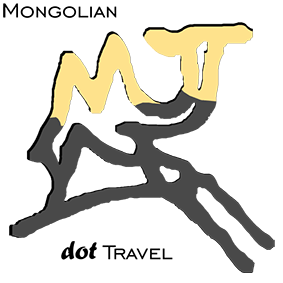
Mongolian Dot Travel is a B2B company that is a member of the Mongolian Tourism Association and one of Mongolia’s most reputable and professional Destination Management Companies.
Group savings
Get the Trip you want
Subscribe to newsletter
Find out about flash sales, new trips, what's new and gear giveaways.
